4.11.2016
Maintaining Arianespace’s flight tempo: the first Ariane 5 for launch in 2017 is at the Spaceport

The protective container with Ariane 5’s EPC cryogenic main stage is unloaded from the MN Colibri roll-on/roll-off transport ship.
Preparations are starting for another busy year of Arianespace launch activity, with the initial Ariane 5 of 2017 now delivered to the Spaceport in French Guiana.
This vehicle recently arrived in French Guiana aboard the MN Colibri, which is one of two roll-on/roll-off ships that transport Arianespace launchers from their European manufacturers to South America.
After docking at Pariacabo Port, the Ariane 5’s components were unloaded and transported by road to the Spaceport – where they will be assembled during activity inside the Launcher Integration Building.
Getting off to a strong start in 2017
The first Ariane 5 mission of 2017 – designated VA235 – will orbit a pair of communications satellites: SKY Brasil-1, for operation by DirecTV Latin America; and Indonesian service provider PT Telkom’s Telkom-3S.
A total of 232 Ariane missions have been performed since the family of European launch vehicles began operation in 1979. Number 233 will be marked on Arianespace’s next flight from the Spaceport, scheduled for November 17 – during which an Ariane 5 ES version will loft four satellites for Europe’s Galileo navigation system.
So far in 2016, Arianespace has conducted five flights with the heavy-lift Ariane 5. This activity was complemented by two missions using the medium-lift Soyuz, plus one with the lightweight Vega vehicle.
Arianespace’s 2016 launch activity will be completed with two December missions: the Vega flight with Turkey’s GÖKTÜRK-1A observation satellite, which will be followed by an Ariane 5 mission to orbit the JCSAT-15 and Star One D1 telecommunications relay platforms.
Quelle: arianespace
-
Update: 25.01.2017
.
SKY Brasil-1 and Telkom-3S are readied for Arianespace’s initial Ariane 5 mission in 2017

During activity in the Spaceport’s S5 payload processing facility, SKY Brasil-1 undergoes its fit-check with the Ariane 5 adapter (at left), while Telkom-3S is installed on a dolly for its pre-launch preparations (photo, right).
The two telecommunications satellites for Arianespace’s first Ariane 5 liftoff of 2017 are undergoing checkout at the Spaceport in preparation for a mid-February flight from French Guiana to geostationary transfer orbit.
Riding in the upper position of Ariane 5’s dual-payload dispenser system will be SKY Brasil-1, a satellite for operation by DIRECTV Latin America to expand the delivery of high-definition, 3-D television and cinema programming throughout Brazil.
Telkom-3S will be deployed as the mission’s second passenger from its location in the launch vehicle’s lower payload position, and utilized in orbit by Indonesian service provider Telkom.
Both spacecraft are undergoing their preparation activity in the Spaceport’s S5 payload processing facility.
A busy manifest: up to 12 missions in 2017
February’s mission with Ariane 5 is designated Flight VA235, signifying the 235th launch of an Ariane-series vehicle from French Guiana. It is one of up to 12 missions targeted by Arianespace in 2017 utilizing its heavy-lift Ariane 5, medium-lift Soyuz and lightweight Vega launcher family.
SKY Brasil-1 was built by Airbus Defence and Space based on the EuroStar 3000 platform, and will have a mass of approximately 6,300 kg. at launch. It is equipped with 81 transponders operating in Ku- and Ka-bands.
Telkom-3S was produced by Thales Alenia Space utilizing the Spacebus 4000B2 platform, with a liftoff mass of about 3,500 kg. Outfitted with 24 C-band transponders, eight extended C-band transponders and 10 Ku-band transponders, Telkom-3S will provide coverage over Indonesia and Southeast Asia.
Quelle: arianespace
-
Update: 7.02.2017
.
Satellites are fueled and ready to go for Arianespace’s first Ariane 5 mission of 2017
The two telecommunications satellites for Arianespace’s next heavy-lift Ariane 5 launch – SKY Brasil-1 and Telkom 3S – have been fueled in preparation for liftoff next week from the Spaceport in French Guiana.

Sky Brasil-1 (left) and Telkom 3S (at right) are fueled in the Spaceport’s S5 payload processing facility, clearing the way for their integration on Ariane 5.
This flight will be the initial Ariane 5 mission in 2017 and the second of up to 12 Arianespace launches during the year operated with the company’s launcher family, which also includes the medium-lift Soyuz and lightweight Vega.
Ariane 5’s overall payload lift performance for the upcoming flight – set for February 14 from the Spaceport’s ELA-3 launch zone – is more than 10.4 metric tons. Its two passengers will be deployed into geostationary transfer orbit during a profile lasting just under 40 minutes.
The mission is designated Flight VA235 in Arianespace’s numbering system, signifying the 235th launch of an Ariane family vehicle from the Spaceport since the series of European-built launchers entered service in December 1979.
Payload fairing logos for the mission’s two passengers
Ahead of the satellites’ integration on Ariane 5, the ogive-shaped payload fairing that will protect them during initial climb-out through the atmosphere has been adorned with decals representing the two satellites’ operators and the spacecraft manufacturers.
Affixed on the fairing’s upper position are logos for the SKY Brasil-1 satellite, to be utilized by AT&T/DIRECTV via its DIRECTV Latin America subsidiary to expand direct-to-home high definition programming. The spacecraft will be separated first during the Flight VA235 sequence, and is to provide coverage over Brazil once operational from its geostationary orbital slot.
SKY Brasil-1 was built by Airbus Defence and Space in Toulouse, France, using the Eurostar E3000 platform.
Flight VA235’s Telkom 3S passenger will be integrated in Ariane 5’s lower payload position for release during the mission’s second deployment phase. This satellite will provide high-definition television services, as well as mobile communications and internet applications for Telkom Indonesia. It was built by Thales Alenia Space in Toulouse and Cannes, France using a Spacebus 4000B2 platform.
Up to seven Ariane 5 liftoffs planned during 2017
The Ariane 5 for next week’s launch currently is in the Spaceport’s Final Integration Building, where it is ready for installation of the two satellite passengers. It was delivered to Arianespace by Airbus Safran Launchers, production prime contractor for the heavy-lift vehicle.
Arianespace’s busy mission manifest for 2017 – to be confirmed based on payload availability – foresees up to seven Ariane 5 launches during the year, joined by three missions utilizing Vega and two with Soyuz.
The year’s activity began on January 27, when a Soyuz lofted Europe’s Hispasat 36W-1 telecommunications satellite on the medium-lift launcher’s first mission from French Guiana to geostationary transfer orbit.

Decals for the Telkom 3S and SKY Brasil-1 relay satellites are installed on the payload fairing during activity in the Spaceport’s Final Assembly Building for Ariane 5.
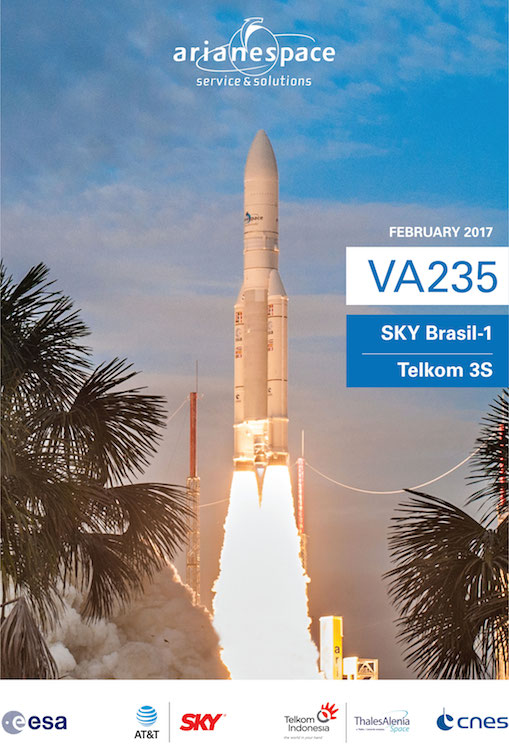
Quelle: arianespace
-
Update: 10.02.2017
.
ARIANESPACE FLIGHT VS16: SKY Brasil-1 / Telkom 3S
The Launch Readiness Review (RAL) took place in Kourou on Friday, February 10, 2017 and authorized count-down operations for SKY Brasil-1 / Telkom 3S.
For its second flight of the year from the Guiana Space Center, and the first Ariane 5 launch in 2017, Arianespace will orbit two satellites: SKY Brasil-1 for the operator AT&T/DIRECTV; and Telkom 3S for Telkom Indonesia, within the scope of a turnkey contract with Thales Alenia Space.
SKY Brasil-1(also known as SKYB-1) will be the 10th satellite launched by Arianespace for the operator AT&T/DIRECTV. The most recent launch was on May 27, 2015, lofting SKY México-1 and DIRECTV 15 on the same Ariane 5.
Telkom 3S will be the third satellite entrusted to Arianespace by Telkom Indonesia within the scope of a turnkey contract with Thales Alenia Space.
The liftoff will be from the Ariane Launch Complex (ELA) in Kourou, French Guiana (South America).
 |
Liftoff is planned on Tuesday, February 14, 2017 as early as possible within the following launch window: Webcast starts 15 minutes before. You can also watch the video transmission live on your iPad, iPhone or Android 4+ devices, the Arianespace HD App is available for free. |
Quelle: arianespace
-
Update: 14.02.2017 / 21.45 MEZ
.
Start von Ariane-V-VA235 LIVE-Frams:
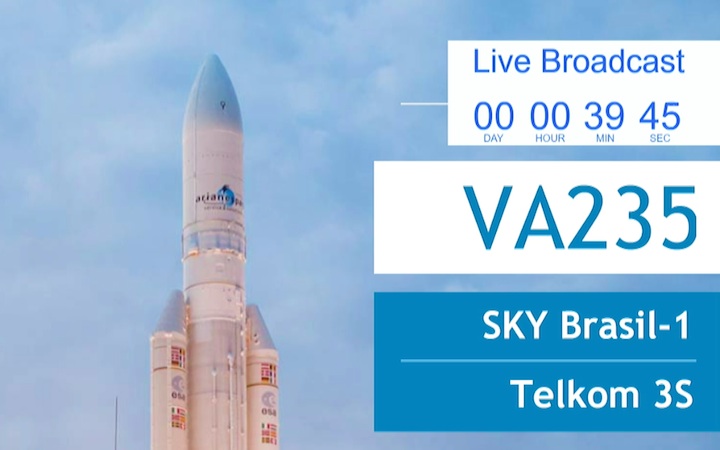
...
22.30 MEZ
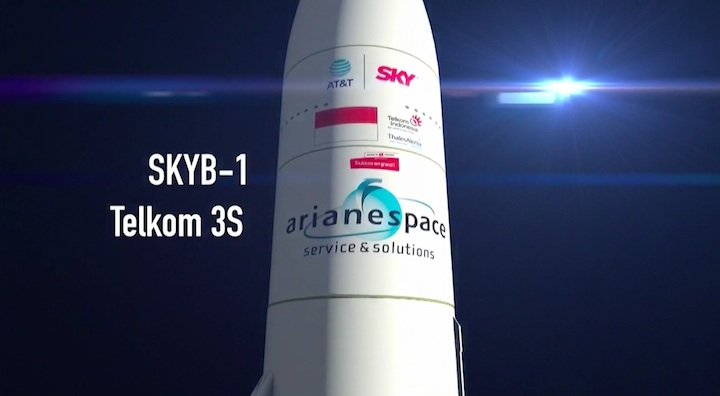
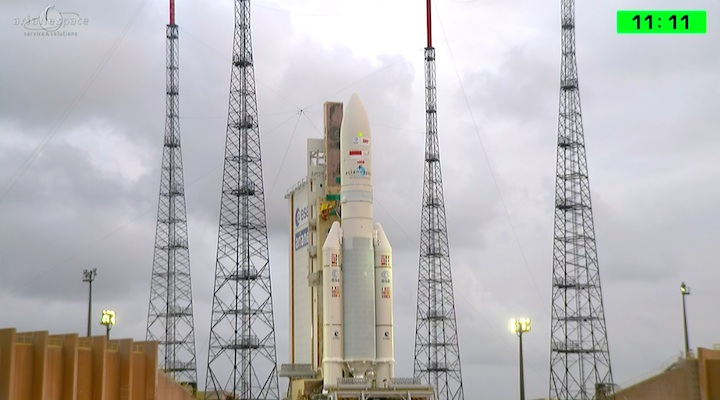
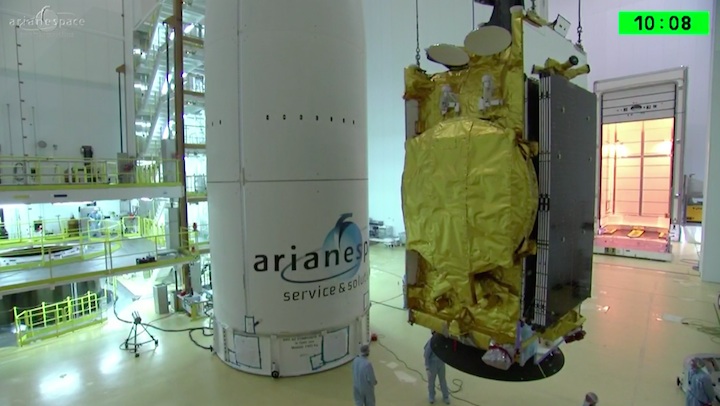
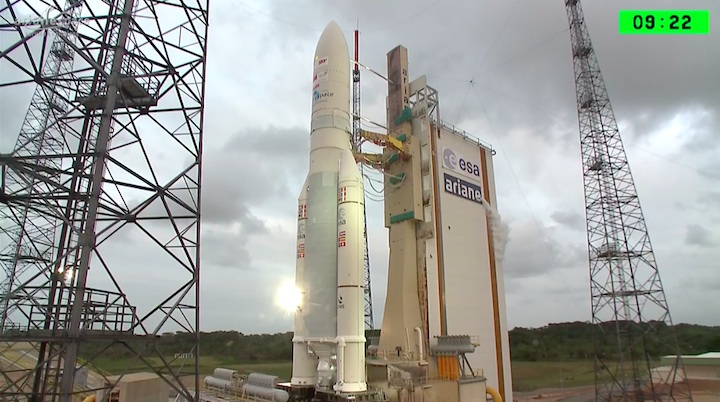
...22.40 MEZ
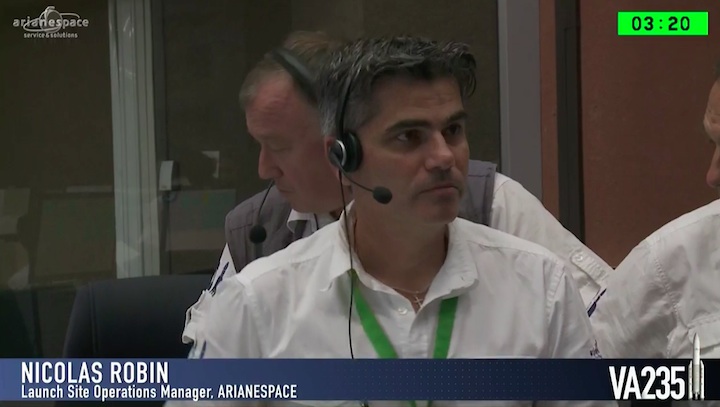
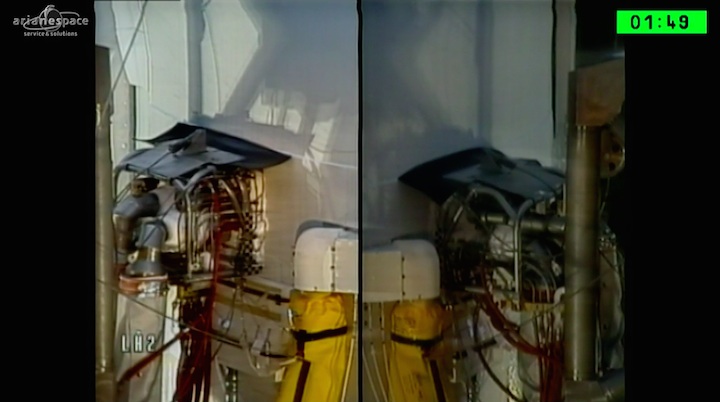
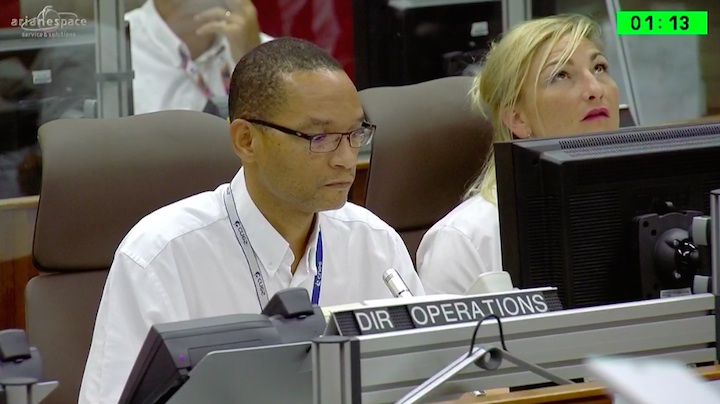
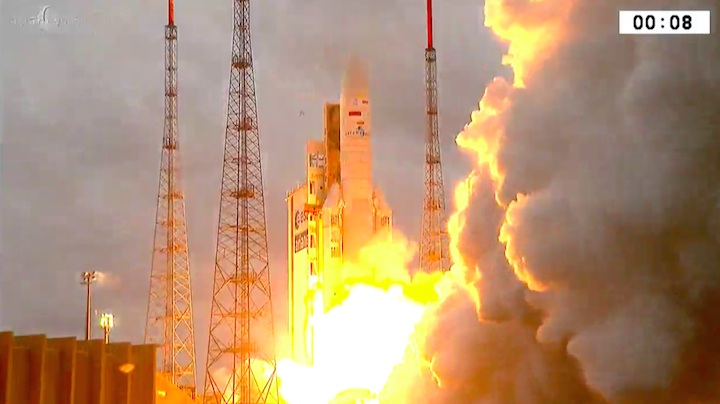
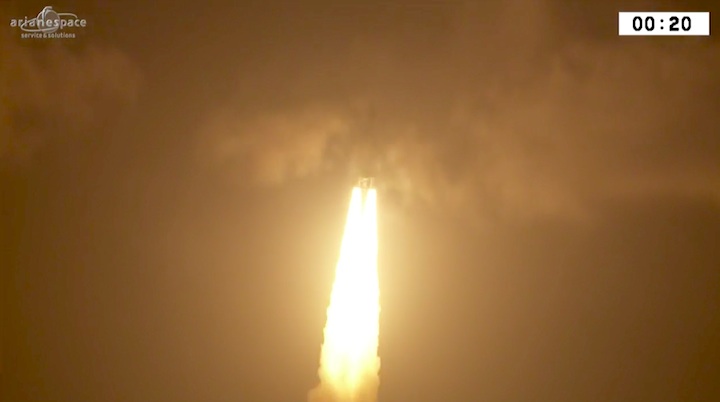
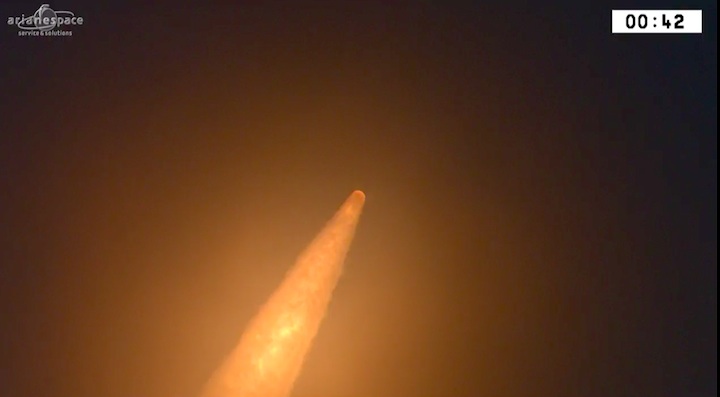
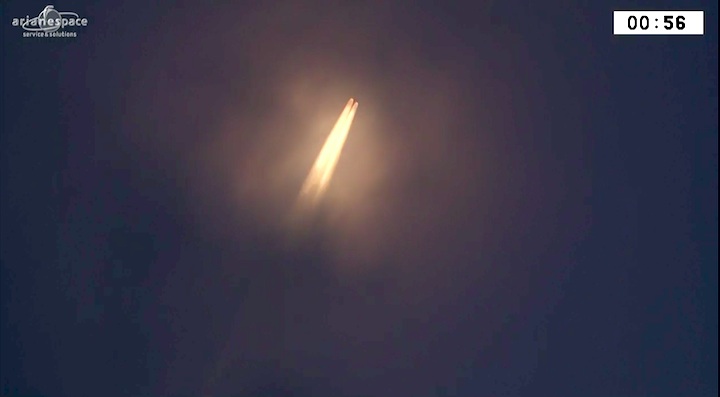
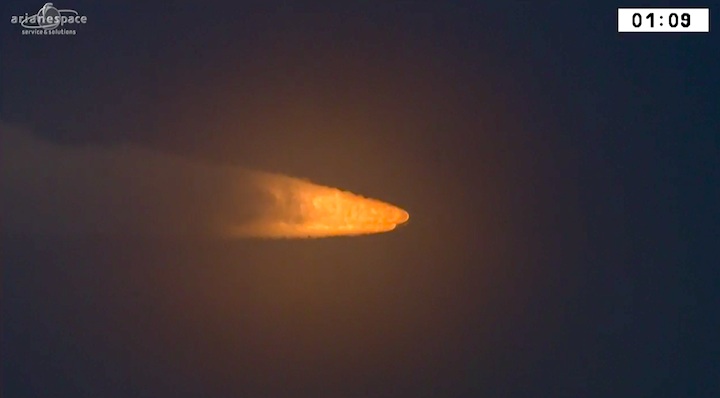
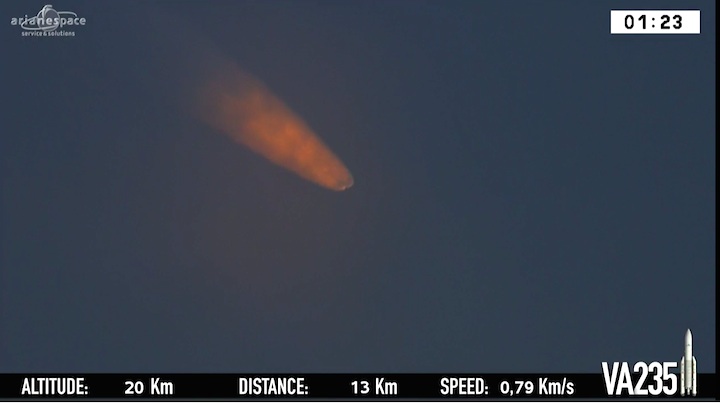
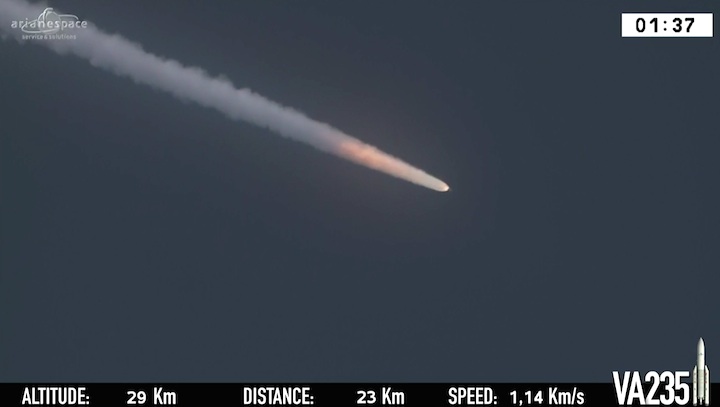
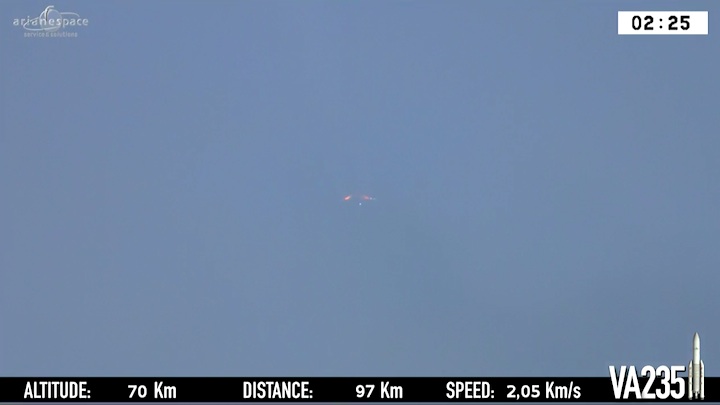
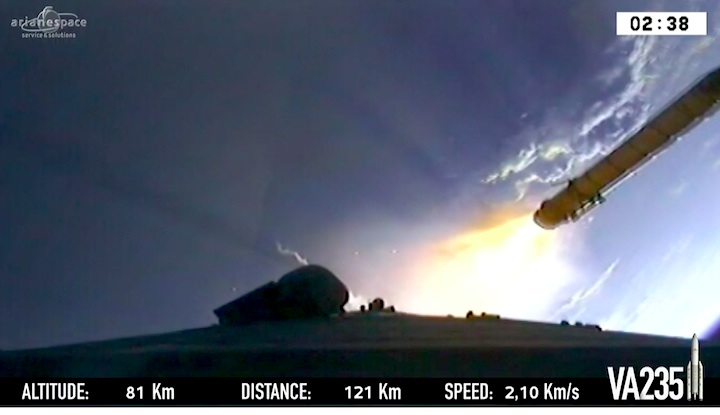
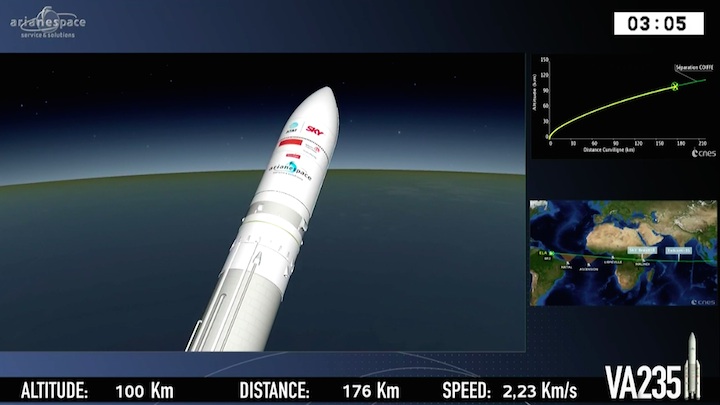
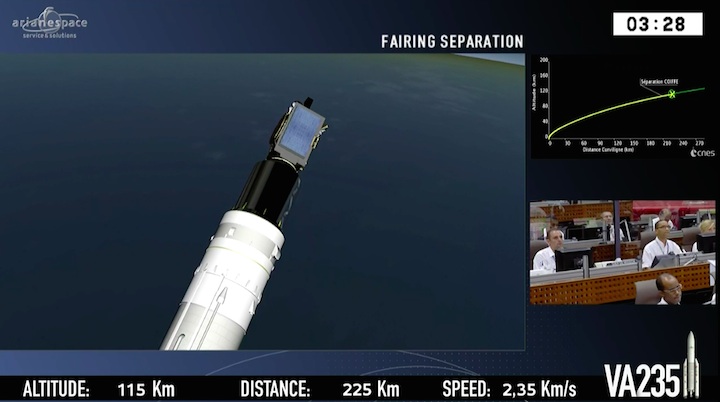
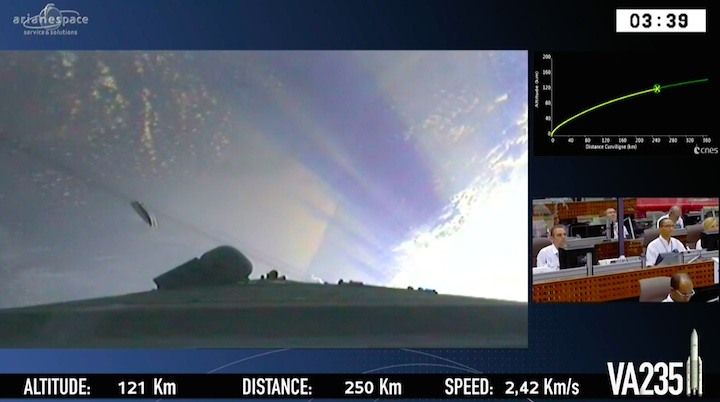
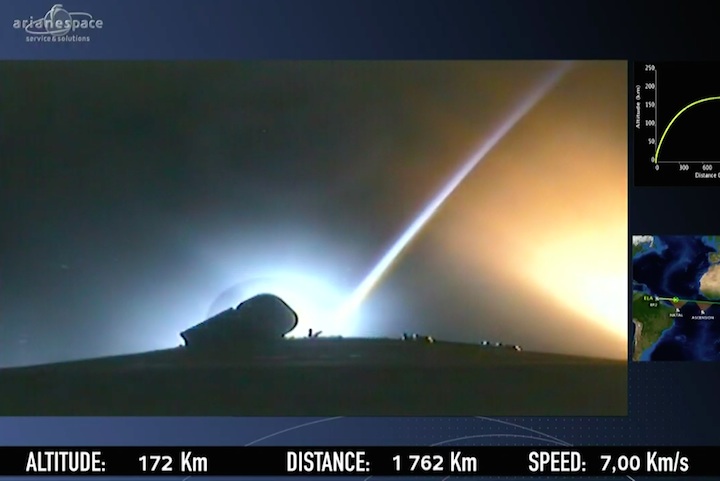
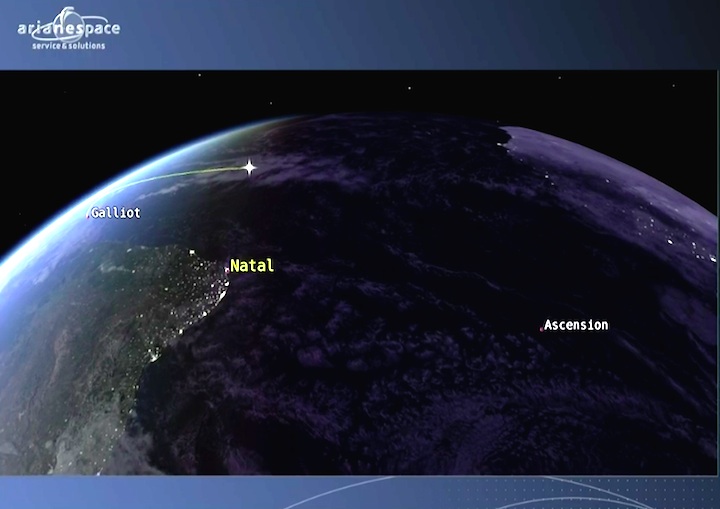
Quelle: arianespace
-
Update: 15.02.2017
.
Indonesia launches Telkom 3S satellite successfully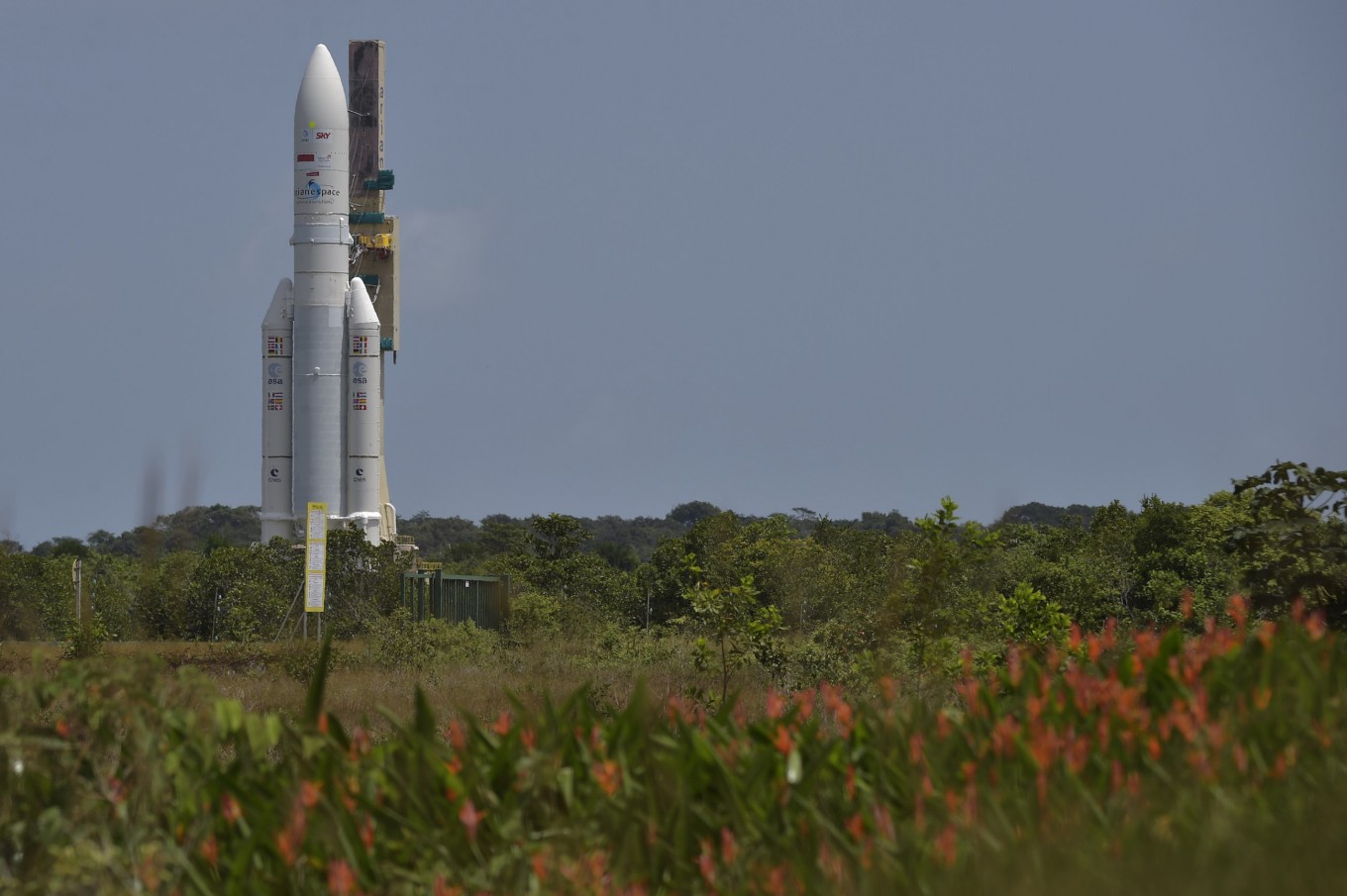 Telkom 3S satellite gets ready to launch from Arianespace in Kourou, French Guiana on Feb. 14. (Antara/Puspa Perwitasari)
Telkom 3S satellite gets ready to launch from Arianespace in Kourou, French Guiana on Feb. 14. (Antara/Puspa Perwitasari)
The Indonesia’s biggest telecommunication company Telekomunikasi Indonesia (Telkom) has successfully launched its Telkom 3S satellite from Arianespace’s spaceport in Kourou, French Guiana, at 6.39 p.m. on February 14 local time or Wednesday at 4.39 am Jakarta time.
The US$215 million worth satellite carries 24 C-band, eight extended C-band, and 10 Ku-band transponders, which intends to provide high-definition television services, faster mobile communications and Internet applications across the sprawling archipelago of over than 17,000 islands.
"With Telkom 3S, Telkom will have a total of three satellites. The launching intends to increase the coverage since Telkom 1 and Telkom 2 has the same coverage with Telkom 3S. The reason is that our capacity is not enough; we still rent [transponders] from other countries,” Telkom’s president director Alex J. Sinaga said, adding that the satellite will first travel to 135.5 degrees east for testing purposes; then it will reach the final orbital position at 118 degrees east.
 Top executives from PT Telekomunikasi Indonesia including president director Alex J. Sinaga (center), chief technology officer Abdus Somad Arief (second from right) and satellite project head Tonda Priyanto (right) pose after the successful launch of Telkom 3S on Tuesday. The satellite was launched according to plan at 6.39 p.m. from Kourou, French Guiana.(JP/Winny Tang)
Top executives from PT Telekomunikasi Indonesia including president director Alex J. Sinaga (center), chief technology officer Abdus Somad Arief (second from right) and satellite project head Tonda Priyanto (right) pose after the successful launch of Telkom 3S on Tuesday. The satellite was launched according to plan at 6.39 p.m. from Kourou, French Guiana.(JP/Winny Tang)
(Read also: Telkom’s $250m satellite to better connect Indonesia’s islands)
Arianespace has successfully orbited two satellites: Telkom 3s for Telkom Indonesia, together with SKY Brasil-1 for the operator AT&T/ DirectTV.
“Arianespace is delighted to announce that SKY Brasil-1 and Telkom 3s have been separated as planned on the targeted geostationary orbit,” Stéphane Israël is the Chairman and CEO of Arianespace said in the satellite viewing site named Jupiter control room on Tuesday night local time.
Replacing the position of Telkom 2, the Telkom 3S, which has a lifespan of 17 years, will cover Indonesia and a part of neighboring Malaysia.
Apart from Indonesia, other countries, such as Brazil, Mexico and other South American countries, have also launched their satellites from the country. (dan)
Quelle: The Jakarta Post


